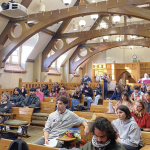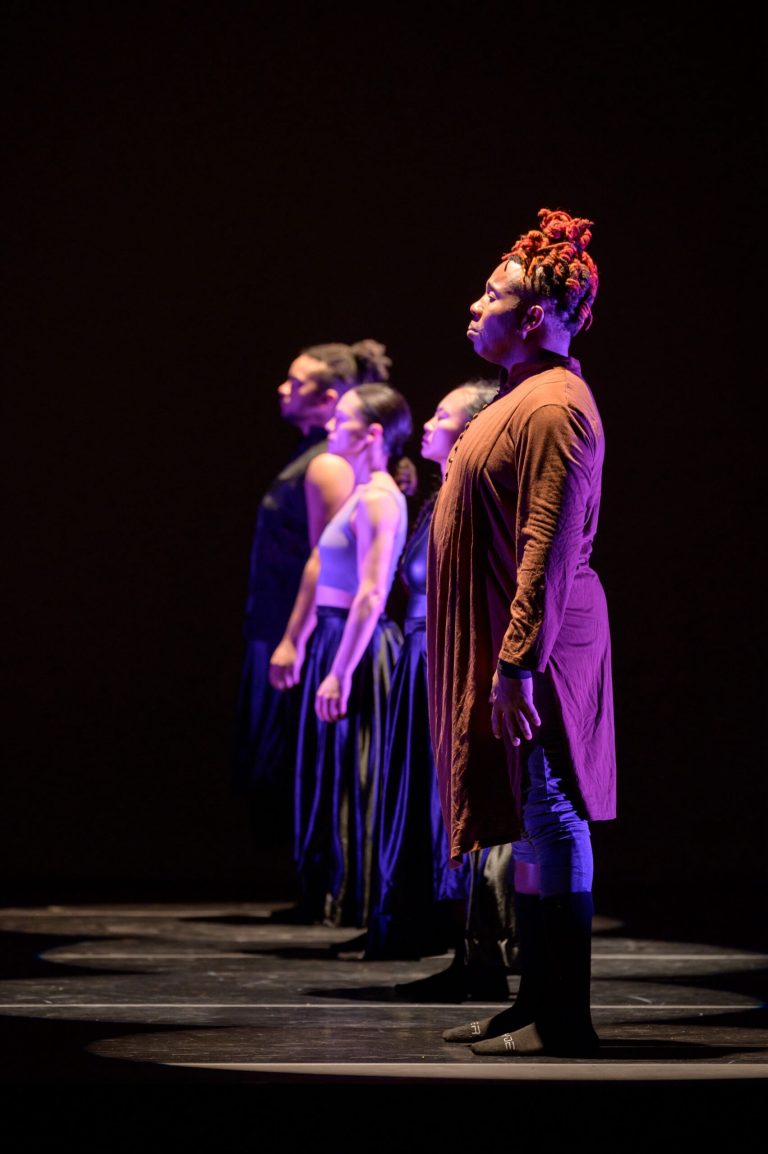Miranda Connolly ’26
Contributing Writer
On Sunday Feb. 23, Cinestudio will be presenting “Exhibiting Forgiveness” directed by Titus Kaphar, in celebration of Black History Month. The screening will occur at 3:30 p.m. and is a free showing. “Exhibiting Forgiveness” is a 2024 film that was nominated for several awards, including the Grand Jury Prize for the U.S. Dramatic Competition. The film won the award for best original song, “Bricks” sung by Andra Day, from the African American Film Critics Association. The acting in the film is what brings the story on the screen to life. The cast includes André Holland (“Moonlight”), Andra Day (“The United States vs Billie Holiday”), John Earl Jelks and Aunjanue Ellis-Taylor (“King Richard”).
Tarell (Holland), is an artist whose paintings were recently exhibited. His artwork received a positive review from a famed art critic, which puts pressure on him to have a new exhibition of paintings. Tarell is a father to a young son with his wife Aisha (Day), who is a professional singer. Tarell’s mother, Joyce, is supposed to come live temporarily in a house that Tarell provided for her. As a family-oriented man, Tarell’s artwork reflects the home. Each of his paintings are set in front of the same backdrop: a home. Yet Tarell’s own father is estranged from his family, and his sudden return into Joyce and Tarell’s life brings forth memories and pain which they had been coping with for most of their lives.
The film is enhanced by its cinematography. Each shot is framed like a painting, with many of the shots mirroring Tarell’s own artwork. The beautiful visual landscape of the film draws the audience in closer to the screen. It feels like you are being swallowed into the world of the story as the film progresses. Some shots feel as if the camera has caught the characters in an intimate moment, almost as if the film was a documentary. Tarell films his father to document his “confessions” of his past and how he treated Tarell and his mother. Tarell uses art not only to cope with his father’s abuse, but also to capture it, and make the truth entirely apparent. Another fantastic aspect of the film was the editing. Images and shots are overlapped, causing a visual vortex which sways the story in different directions. The film transitions from painting to real life, not only showing what influences Tarell’s artwork, but also explaining the specific moments of Tarell’s past he chose to paint. Tarell’s artwork reflects his past but also his future: he has focused so much on how his own father hurt him and now he must make sure he does not harm his own son. Tarell’s artwork is about more than a single frame of the moment which it captures, his artwork captures his entire life.
The film raises the question of forgiveness, and whether or not a person should forgive someone who brought so much pain into their lives. Tarell navigated his past relationship with his father, and the possibility of a relationship with him in the present. The film explores what exactly can create the destruction of a relationship as well as what can rebuild one, and if our past relationships inevitably influence our current ones. There is a cycle of violence which Tarell’s father belongs to, but can Tarell break free from it to spare his son? The film opens with a quote from James Baldwin: “If the relationship of father to son could really be reduced to biology, the whole earth would blaze with the glory of fathers and sons. But sometimes biology only leaves us with smoldering embers.” Tarell is asked to forgive his father for what he did to him, to his mother and to his own family, but does this mean he needs to forget the past? What type of man will Tarell become if he does not forgive his father? Will this decision change Tarell’s own son? And should we, the viewers, forgive Tarell’s father? All these questions and more can be answered if you attend the free showing on Sunday, Feb. 23 at Cinestudio at 3:30 p.m.



+ There are no comments
Add yours